#BleedingDisorder
Explore tagged Tumblr posts
Text

On World Haemophilia Day, let's unite and raise awareness for individuals in our community living with bleeding disorders or caring for someone who does.
For more information contact Mob: +91-7055514537 Book your appointment today - https://gshospitals.in/appointment.php Address: - NH-9, Near Railway Station Pilkhuwa, Hapur (U.P.)
#RaiseAwareness#BleedingDisorder#TreatmentForAll#BloodDisordersAwareness#SupportForPatients#StopTheBleeding#Gshospital
1 note
·
View note
Text
Supporting World Haemophilia Day: Advocacy for Improved Care and Treatment
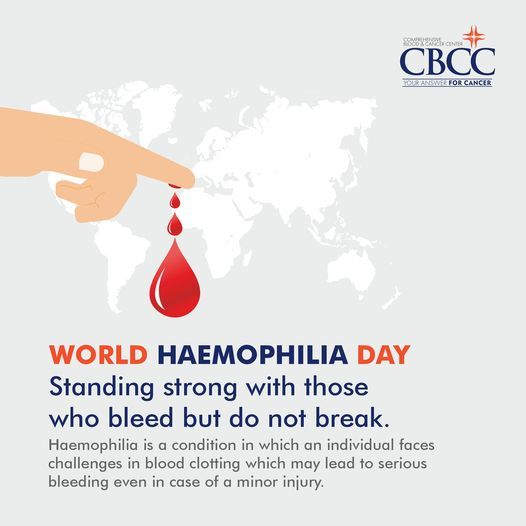
Join us on World Haemophilia Day with CBCC Hospital in Raipur, Trichy, and Agartala. Join us in raising awareness and advocating for better treatment and care for those living with this rare bleeding disorder. Support the cause and help ensure vital resources for our community members affected by haemophilia.
#World Haemophilia Day#Haemophilia treatment#Bleeding disorders awareness#Rare disease support#Haemophilia care advocacy#haemophilia#bleedingdisorder#raredisease#healthawareness#cbcc#cbccindia
0 notes
Text

𝟏. 𝐂𝐨𝐦𝐩𝐨𝐧𝐞𝐧𝐭𝐬 𝐨𝐟 𝐁𝐥𝐨𝐨𝐝: Blood consists of several components, including red blood cells (erythrocytes), white blood cells (leukocytes), platelets (thrombocytes), and plasma. Each of these components has specific functions in maintaining overall health. 𝟐. 𝐑𝐞𝐝 𝐁𝐥𝐨𝐨𝐝 𝐂𝐞𝐥𝐥 𝐃𝐢𝐬𝐨𝐫𝐝𝐞𝐫𝐬: Conditions such as anemia, sickle cell disease, and thalassemia are characterized by abnormalities in red blood cells. Anemia, for example, results in a decreased number of red blood cells or a reduced ability of these cells to carry oxygen.
Visit: https://symbiosisonlinepublishing.com/hematology/
#RedBloodCells#hematology#hematologist#hematologia#blooddisorder#blooddisease#blooddisorderawareness#diagnosis#diagnostics#diagnostictesting#Hemostatic#anemia#leukemia#bleedingdisorder#clottingdisorders#Lymphoproliferative#multiplemyeloma#coagulation#research#researcher#researchers#pubmed#peerreviewed#peerreview#peerreviewedjournals#openaccess#openaccessjournal#InternationalJournal#journals#journal
1 note
·
View note
Text
Hemophilia A and B (Bleeding Disorders)
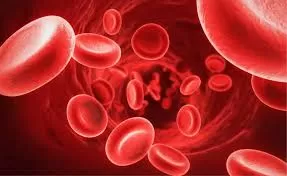
Hemophilia facts
Hemophilia is a rare genetic bleeding disorder that affects about 1 in 5,000 to 10,000 males worldwide. Here are some facts about hemophilia: - Hemophilia is caused by a deficiency in clotting factor proteins in the blood, which leads to prolonged bleeding. - There are two main types of hemophilia: hemophilia A, which is caused by a deficiency in clotting factor VIII, and hemophilia B, which is caused by a deficiency in clotting factor IX. - Hemophilia is typically an inherited disorder that is passed down through families, but in rare cases it can occur spontaneously. - Hemophilia mostly affects males, as the gene for the disorder is located on the X chromosome. Females can also be carriers of the gene and pass it on to their children. - The severity of hemophilia varies depending on the level of clotting factor in the blood. People with severe hemophilia may experience spontaneous bleeding, while those with mild hemophilia may only experience bleeding after injury or surgery. - Common symptoms of hemophilia include easy bruising, prolonged bleeding after injury or surgery, joint pain and swelling, and frequent nosebleeds. - Hemophilia can be diagnosed through blood tests that measure the level of clotting factor in the blood. - Treatment for hemophilia involves replacement therapy, in which missing clotting factor proteins are replaced through intravenous infusions. This can help prevent and control bleeding episodes. - With proper treatment, people with hemophilia can lead relatively normal lives, but they must take precautions to avoid injury and bleeding. - Hemophilia is a lifelong condition that requires ongoing medical care and management.
What is the difference between hemophilia A and B and C?
Hemophilia A, B, and C are all bleeding disorders caused by deficiencies in clotting factor proteins in the blood, but they are caused by different factors and affect people differently. Hemophilia A is caused by a deficiency in clotting factor VIII, while hemophilia B is caused by a deficiency in clotting factor IX. These two types of hemophilia are the most common, and they are both inherited in an X-linked recessive pattern, meaning the gene that causes the disorder is located on the X chromosome. As a result, hemophilia A and B mostly affect males, while females are typically carriers of the gene. Hemophilia C, on the other hand, is caused by a deficiency in clotting factor XI, which is inherited in an autosomal recessive pattern. This means that both parents must pass on the faulty gene for their child to develop hemophilia C, and it can affect males and females equally. Hemophilia C is much less common than hemophilia A and B. The severity of hemophilia varies depending on the level of clotting factor in the blood, but generally speaking, hemophilia A and B tend to be more severe than hemophilia C. People with hemophilia A or B may experience spontaneous bleeding, while those with hemophilia C may only experience bleeding after injury or surgery. Treatment for hemophilia A, B, and C all involve replacement therapy, in which missing clotting factor proteins are replaced through intravenous infusions. However, the specific treatment and dosage may vary depending on the type and severity of the disorder.
What causes hemophilia A?
Hemophilia A is caused by a deficiency or absence of clotting factor VIII in the blood, which is necessary for normal blood clotting. This deficiency is typically the result of a genetic mutation that affects the production of clotting factor VIII. The gene that controls the production of clotting factor VIII is located on the X chromosome, one of the sex chromosomes. Hemophilia A is inherited in an X-linked recessive pattern, which means that the gene mutation is located on the X chromosome. Males have only one X chromosome, so if they inherit the faulty gene from their mother, they will develop hemophilia A. Females have two X chromosomes, so they can be carriers of the gene without developing the disorder themselves. However, if a female carrier has a son, he has a 50% chance of inheriting the faulty gene and developing hemophilia A. In rare cases, hemophilia A can also occur as a result of a spontaneous genetic mutation that is not inherited from either parent. This is known as a de novo mutation. It's worth noting that hemophilia A is a rare disorder, affecting about 1 in 5,000 to 10,000 males worldwide.
What are the symptoms of hemophilia A and B?
The symptoms of hemophilia A and B can vary depending on the severity of the deficiency in clotting factor VIII or IX, respectively. Generally, the lower the level of clotting factor in the blood, the more severe the symptoms are likely to be. Here are some common symptoms: - Prolonged bleeding: This is the most common symptom of hemophilia A and B. People with hemophilia may experience prolonged bleeding after an injury, surgery, or dental work, or they may experience spontaneous bleeding without an apparent cause. The bleeding may be internal or external and can occur in any part of the body. - Bruising: People with hemophilia A and B may experience large or deep bruises that take longer than normal to heal. - Joint pain and swelling: Bleeding into the joints can cause pain, swelling, stiffness, and limited mobility. This is a common symptom in people with severe hemophilia. - Nosebleeds: People with hemophilia A and B may experience frequent or prolonged nosebleeds. - Blood in urine or stool: Bleeding can occur in the urinary or digestive tract, resulting in blood in the urine or stool. - Intracranial bleeding: In severe cases, bleeding can occur in the brain, which can cause headaches, vomiting, seizures, and other neurological symptoms. It's worth noting that the severity of hemophilia can vary, even within the same family. Some people with hemophilia may experience only mild symptoms, while others may experience severe and life-threatening bleeding episodes. Regular medical check-ups and treatment can help manage the symptoms of hemophilia and prevent complications.
How is hemophilia A and B diagnosed?
Hemophilia A and B are typically diagnosed through a combination of physical exams, medical history, blood tests, and genetic testing. - Physical exam: A doctor may examine a person with suspected hemophilia for signs of bleeding, such as bruises, joint swelling, and deformities. - Medical history: A doctor may ask about a person's personal and family medical history to determine if there is a history of bleeding disorders or if there are any risk factors for hemophilia. - Blood tests: Blood tests can be used to measure the levels of clotting factor VIII or IX in the blood. These tests can help diagnose hemophilia A or B and determine the severity of the deficiency. - Genetic testing: Genetic testing can be used to confirm a diagnosis of hemophilia A or B and identify the specific genetic mutation responsible for the disorder. This can be helpful for family planning and genetic counseling. - Bleeding time tests: In addition to clotting factor tests, bleeding time tests may be performed to assess a person's blood clotting ability. It's important to note that hemophilia is a rare disorder, so it may not be the first condition a doctor considers when evaluating someone with bleeding symptoms. A hematologist, a doctor who specializes in blood disorders, may be consulted to help make a diagnosis.
Is it possible to know if you are a carrier of hemophilia?
Yes, it is possible to know if you are a carrier of hemophilia through genetic testing. Hemophilia is an X-linked genetic disorder, which means that the gene responsible for producing the clotting factor VIII or IX is located on the X chromosome. Females have two X chromosomes, so they can be carriers of the gene mutation without developing hemophilia themselves. Genetic testing can determine if a female carries the gene mutation that causes hemophilia. This can be helpful for family planning and genetic counseling. Genetic testing can also be done for males with hemophilia to determine the specific genetic mutation responsible for their disorder. If you have a family history of hemophilia, you may want to consider genetic testing to determine if you are a carrier. A genetic counselor can help you understand the risks and benefits of genetic testing and help you make an informed decision.
What are treatments for hemophilia?
The main treatment for hemophilia A and B is replacement therapy, which involves infusing clotting factor VIII or IX into the bloodstream to replace the missing or deficient clotting factor. The clotting factor can be obtained from donated human plasma or produced synthetically in a laboratory. Replacement therapy is typically given as a preventive measure, known as prophylaxis, to reduce the risk of bleeding episodes. The frequency and dosage of replacement therapy can vary depending on the severity of the hemophilia and the individual's needs. Other treatments for hemophilia may include: - Desmopressin (DDAVP): This medication can stimulate the release of stored clotting factor VIII in mild or moderate cases of hemophilia A. - Clot-stabilizing medications: These medications can help stabilize clots and reduce bleeding in certain situations. - Gene therapy: This experimental treatment involves introducing a functional copy of the gene responsible for producing clotting factor VIII or IX into the body to help restore normal clotting function. - Physical therapy: This can help improve joint mobility and prevent joint damage caused by bleeding into the joints. - Psychological counseling: Hemophilia can have a significant impact on a person's emotional and social well-being. Psychological counseling can help individuals and families cope with the challenges of living with hemophilia. It's important for individuals with hemophilia to work closely with a healthcare team, including a hematologist, to develop a comprehensive treatment plan that addresses their individual needs and goals.
Inhibitors
Inhibitors are a potential complication of treatment for hemophilia A and B. Inhibitors are antibodies produced by the immune system that neutralize or destroy the infused clotting factor VIII or IX, rendering replacement therapy ineffective. Inhibitors occur in about 25-30% of people with severe hemophilia A and in a smaller percentage of people with severe hemophilia B. Inhibitors can also occur in people with mild or moderate hemophilia who have been treated with replacement therapy. The development of inhibitors can make it more difficult to manage bleeding episodes and may require alternative treatment strategies, such as immune tolerance induction (ITI) therapy or bypassing agents. ITI therapy involves giving frequent and high doses of clotting factor to try to overcome the immune system's response to the infused factor. This can take several months or even years to be effective. Bypassing agents, such as activated prothrombin complex concentrate (aPCC) or recombinant activated factor VII (rFVIIa), can be used to treat bleeding episodes in people with inhibitors. These agents work by bypassing the missing clotting factor and activating other proteins in the blood clotting cascade to form a clot. Inhibitors can have a significant impact on a person's treatment and quality of life. Regular monitoring of clotting factor levels and the development of inhibitors is important for managing hemophilia and preventing complications.
Infections
Infections can be a potential complication for people with hemophilia, particularly if they receive clotting factor concentrates obtained from human blood. Prior to the implementation of stringent screening and purification processes, clotting factor concentrates were a source of viral infections such as HIV and hepatitis C. Today, clotting factor concentrates are extensively screened and treated to minimize the risk of infection. However, infections can still occur, particularly if the concentrates are not stored or administered properly. Infections can also occur as a result of frequent injections or infusions, particularly in people with implanted ports or central lines. These devices can become infected and may need to be removed and replaced. Common infections in people with hemophilia include: - Hepatitis B and C: These viral infections can cause liver damage and can be spread through contaminated blood products. - HIV: This viral infection can weaken the immune system and can be spread through contaminated blood products. - Bacterial infections: These can occur at the injection or infusion site or in other parts of the body. - Fungal infections: These can occur in people with weakened immune systems or as a result of prolonged antibiotic treatment. It's important for people with hemophilia to practice good hygiene, such as washing hands regularly and cleaning injection or infusion sites properly, to reduce the risk of infection. Any signs of infection, such as fever, redness, or swelling at the injection site, should be reported to a healthcare provider immediately. Regular monitoring of liver function and viral infections is also important for people with hemophilia.
Can hemophilia be prevented?
Hemophilia is a genetic disorder, and currently, there is no known way to prevent it from occurring in individuals with a family history of the disorder. However, genetic counseling and testing can help families understand the risk of passing the disorder to their children. Prenatal testing can also be performed to diagnose hemophilia before birth. This allows parents to make informed decisions about the pregnancy and prepare for the care of a child with hemophilia if necessary. In terms of prevention of complications related to hemophilia, prophylactic replacement therapy with clotting factor concentrates can help prevent bleeding episodes and joint damage. This approach involves administering clotting factor concentrates on a regular basis to maintain a sufficient level of clotting factor in the blood. Additionally, people with hemophilia can take steps to prevent injuries and avoid activities that may increase their risk of bleeding, such as contact sports. Wearing protective gear, such as helmets and pads, can also help prevent injuries and reduce the severity of bleeding if an injury does occur. Overall, while hemophilia cannot be prevented, early diagnosis, appropriate treatment, and careful management can help individuals with hemophilia live healthy and productive lives.
What is the outlook (prognosis) for hemophilia?
The outlook for people with hemophilia has improved significantly over the past few decades due to advances in treatment and management strategies. With appropriate care, people with hemophilia can live relatively normal and healthy lives. Prophylactic treatment with clotting factor concentrates has been shown to prevent joint damage and improve quality of life in people with hemophilia. In addition, the development of new therapies, such as gene therapy, holds promise for the future treatment of hemophilia. However, the severity of the disorder can vary widely, and the outlook depends on the individual's specific situation. People with severe hemophilia are at higher risk for bleeding episodes and complications, such as joint damage, infections, and inhibitors. Regular monitoring of clotting factor levels, joint health, and potential complications is important for managing hemophilia and improving outcomes. Engaging in appropriate exercise and physical therapy can also help maintain joint health and mobility. Overall, with appropriate care and management, people with hemophilia can lead healthy and fulfilling lives. However, ongoing research and development of new therapies will continue to improve outcomes and quality of life for people with hemophilia.
What are possible future treatments for hemophilia?
There are several potential future treatments for hemophilia that are currently being developed and tested: - Gene therapy: Gene therapy involves introducing a healthy copy of the faulty gene responsible for hemophilia into the patient's cells. This approach has shown promise in early clinical trials and has the potential to provide a long-lasting cure for hemophilia. - Non-replacement therapies: Non-replacement therapies aim to promote blood clotting through alternative mechanisms, such as by stimulating the production of clotting factors or inhibiting the activity of natural anticoagulants. Several non-replacement therapies are currently in development and undergoing clinical trials. - Bispecific antibodies: Bispecific antibodies are designed to bind both to clotting factors and to platelets, enhancing the formation of blood clots at sites of injury. - Hemostatic agents: Hemostatic agents are topical treatments that can be applied directly to a bleeding site to promote clotting. These agents could provide an alternative to factor replacement therapy for minor bleeding episodes. - Nanoparticle-based therapies: Nanoparticles are tiny particles that can be engineered to deliver clotting factors to specific sites in the body. These therapies have the potential to improve the efficiency and effectiveness of clotting factor replacement therapy. Overall, ongoing research and development of new therapies will continue to improve outcomes and quality of life for people with hemophilia. Read the full article
#BleedingDisorders#BloodClottingDisorders#FactorReplacementTherapy#HemophiliaA#HemophiliaB#HemophiliaTreatment#Treatment
0 notes
Text
Did you know major challenge for people with bleeding disorders who travel to different countries?
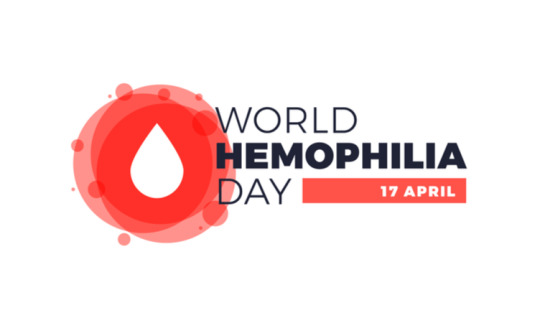
World Hemophilia Day, dedicated to raising awareness about hemophilia & other bleeding disorders.
@wooask provides voice translation in real-time, making it easy for people with bleeding disorders to communicate with healthcare providers, locals, other travelers. With @wooaskappofficial, language barriers are a thing of the past.
Download the app today & spread the word about this life-changing tool. 😎📲
#WorldHemophiliaDay#translationapp#languagebarriers#realtime#communication#bleedingdisorders#raiseawareness#translate#learnlanguages#linguistics#translateit#bilingual#polyglot#translating#interpreting#translatortools#health and wellness
0 notes
Link
0 notes
Text
𝗪𝗢𝗥𝗟𝗗 𝗛𝗔𝗘𝗠𝗢𝗣𝗛𝗜𝗟𝗜𝗔 𝗗𝗔𝗬
Hemophilia is usually an inherited bleeding disorder in which the blood does not clot properly. This can lead to spontaneous bleeding as well as bleeding following injuries or surgery. Blood contains many proteins called clotting factors that can help to stop bleeding.
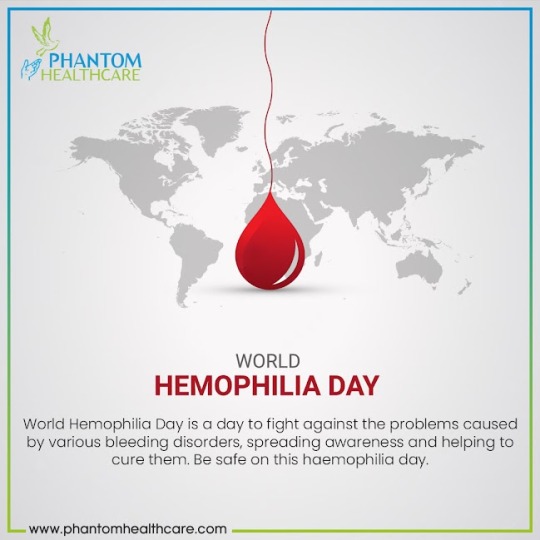
#bleedingdisorders#haemophilia#worldhemophiliaday#hemophiliaawareness#hemophilialife#hemophiliaproblems
1 note
·
View note
Text
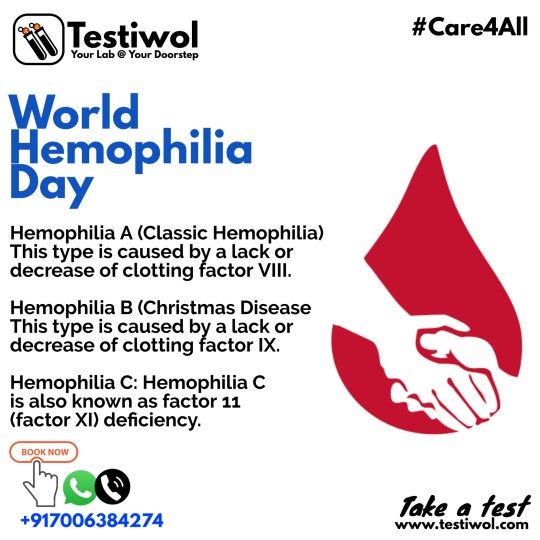
0 notes
Text
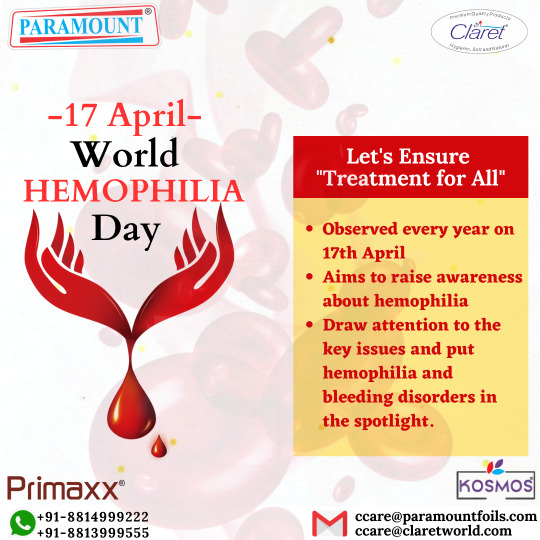
Every year on 17 April, World Hemophilia Day is recognized worldwide to increase awareness of hemophilia. Hemophilia doesn't stop us; Let's raise awareness to stop Hemophilia.
#worldhemophiliaday#hemophilia#hemophilialife#hemophiliac#hemophiliamom#hemophiliaday#hemophiliaawareness#whd#hemophiliaproblems#hemophiliacommunity#hemophiliastrong#hemolife#hemofilia#haemophilia#bleedingdisorders#vwd#bloodbrothers#hemophiliarussia#hemophiliab#hemophiliaa#hemophiliawarrior#wfh#tumblrpost
0 notes
Photo

With adequate access to treatment, traveling with #hemophilia 🩸 is significantly safer. #hemophiliaa #hemophiliac #hemophiliaawareness #hemophilialife #hemophiliaproblems #hemophiliacommunity #hemophiliaadvocates #hemophiliawarrior #hemophiliastrong #hemophiliaday #hemophiliafamily #bleedingdisorders #bleedingdisordersawareness ##whd2023 #treatment #travel #travelphotography #travelblogger #traveler #travelling #europe #europetravel #gibraltar #monkey #animallovers #animallover #nature @ehc_haemophilia #wfhemophilia https://www.instagram.com/p/CqWccVVKc4q/?igshid=NGJjMDIxMWI=
#hemophilia#hemophiliaa#hemophiliac#hemophiliaawareness#hemophilialife#hemophiliaproblems#hemophiliacommunity#hemophiliaadvocates#hemophiliawarrior#hemophiliastrong#hemophiliaday#hemophiliafamily#bleedingdisorders#bleedingdisordersawareness#whd2023#treatment#travel#travelphotography#travelblogger#traveler#travelling#europe#europetravel#gibraltar#monkey#animallovers#animallover#nature#wfhemophilia
0 notes
Video
youtube
SURGICAL PATHOLOGY STATION OF POLYTRAUMA | BLOOD TRANSFUSION | DIC
SURGICAL PATHOLOGY STATION OF POLYTRUMA | BLOOD TRANSFUSION | DIC MRCS B OSCE - MOCK EXAM ALL THE REQUIRED STUDY MATERIAL: https://samreensway.com/2020/02/15/how-to-un-code-the-mrcs-b-osce-a-guide/ Bli medlem i kanalen för att få åtkomst till flera förmåner: https://www.youtube.com/channel/UCkkvon_blxinTHc7DGuYkpQ/join
#youtube#surgicalpathology pathology polytruma bloodtransfusion dic hepatitis bleedingdisorder medicine doctor surgery health medical healthcare mrcs
0 notes
Text
Unwavering determination knows no bounds!

#WorldHemophiliaDay #Bravehearts #UnwaveringDetermination #NeverGiveUp #educatechildren #underprivilegedchildren #parkshala #ngoforunderprivileged #sponsored #financialcrisis #rightoeducation #bleedingdisorder #HaemophiliaDay #Haemophilia
0 notes
Text

Hematology is the medical specialty that focuses on the study, diagnosis, treatment, and prevention of disorders related to blood and the components of the blood, including red and white blood cells, platelets, and plasma.
Visit @ https://symbiosisonlinepublishing.com/hematology/
#hematology#hematologist#hematologia#blooddisorder#blooddisease#blooddisorderawareness#diagnosis#diagnostics#diagnostictesting#Hemostatic#anemia#leukemia#bleedingdisorder#clottingdisorders#Lymphoproliferative#multiplemyeloma#coagulation#research#researcher#researchers#pubmed#peerreviewed#peerreview#peerreviewedjournals#openaccess#openaccessjournal#InternationalJournal#journals#journal#symbiosisonlinepublishing
1 note
·
View note
Text

World Hemophilia Day is observed on April 17th every year to raise awareness about hemophilia and other bleeding disorders. Hemophilia is a genetic disorder in which the blood doesn't clot normally, leading to excessive bleeding and bruising. The theme for World Hemophilia Day 2023 is "Treatment for All: The Power of Access".
Reach us +91 9662736666, Visit: www.bharathorthopaedics.com
#WorldHemophiliaDay #WHD2023 #HemophiliaAwareness #BleedingDisorders #BloodDisorders #TreatmentForAll #StopTheBleeding #BloodBrotherhood #KnowHemophilia
1 note
·
View note
Text

World Hemophilia Day is observed on April 17th every year to raise awareness about hemophilia and other bleeding disorders.
For inquiries, contact +91 7868999988
Email: [email protected]
Visit us http://frontierlifeline.com
#WorldHemophiliaDay #WHD2023 #HemophiliaAwareness #BleedingDisorders #BloodDisorders #TreatmentForAll #StopTheBleeding #BloodBrotherhood #KnowHemophilia
0 notes
Text

World Hemophilia Day is observed on April 17th every year to raise awareness about hemophilia and other bleeding disorders. Hemophilia is a genetic disorder in which the blood doesn't clot normally, leading to excessive bleeding and bruising. The theme for World Hemophilia Day 2023 is "Treatment for All: The Power of Access".
The World Federation of Hemophilia (WFH) started observing World Hemophilia Day in 1989 and it has since become an important event for the bleeding disorders community. The day aims to educate people about hemophilia, support those who have it, and advocate for better treatment and care.
WorldHemophiliaDay #WHD2023 #HemophiliaAwareness #BleedingDisorders #BloodDisorders #TreatmentForAll #StopTheBleeding #BloodBrotherhood #KnowHemophilia
1 note
·
View note